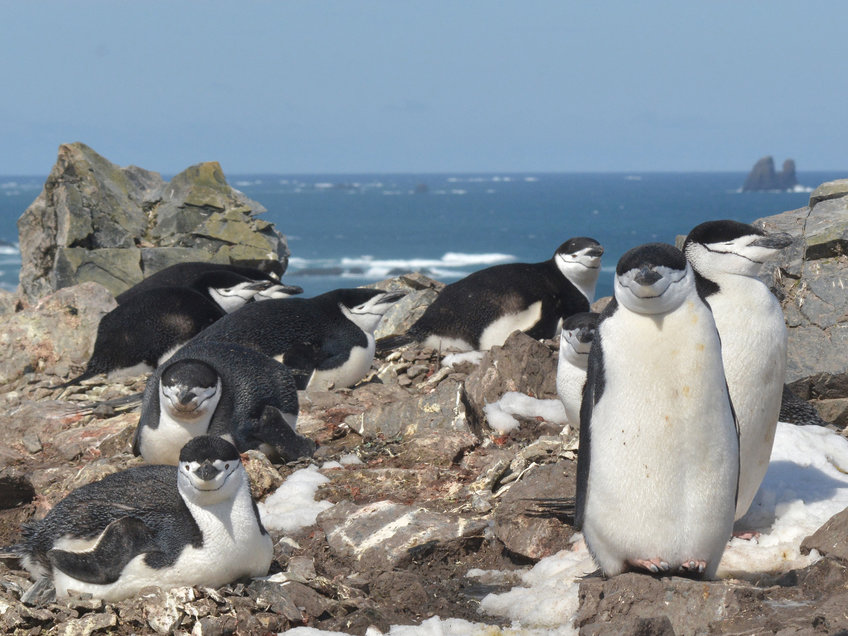2023-11-30 マックス・プランク研究所
 Chinstrap penguins nesting in a dangerous environment get large quantities of sleep through thousands of episodes of seconds-long microsleeps.
Chinstrap penguins nesting in a dangerous environment get large quantities of sleep through thousands of episodes of seconds-long microsleeps.
© Paul-Antoine Libourel, Lyon Neuroscience Research Centre, France
◆この研究では、キングジョージ島で繁殖するチンストラップペンギンが、数秒の「微睡み」を通じて睡眠を得ても子育てに成功していることが初めて報告されました。鰹鳥の存在や仲間との攻撃への対応として、ペンギンは異例の「微睡み」パターンを示し、これが環境への適応の一環である可能性があります。また、海上でも睡眠が可能であり、失われた睡眠は陸地で一部回復されます。
◆この研究は、微睡みが睡眠の機能を果たす可能性を示唆し、少なくとも一部の種では有益であることを示しています。
<関連情報>
- https://www.mpg.de/21169426/1127-orni-penguins-nesting-in-a-dangerous-environment-obtain-large-quantities-of-sleep-via-seconds-long-microsleeps-154562-x
- https://www.science.org/doi/10.1126/science.adh0771
巣を作るアゴヒゲペンギンは、数秒間のマイクロスリープによって大量の睡眠を獲得する Nesting chinstrap penguins accrue large quantities of sleep through seconds-long microsleeps
P.-A. Libourel,W. Y. Lee,I. Achin ,H. Chung,J. Kim , and B. Massot,N. C. Rattenborg
Science Published:30 Nov 2023
DOI:https://doi.org/10.1126/science.adh0771
Editor’s summary
Anyone who has driven late at night will likely recognize microsleeps, those seconds-long “sleep” bouts that pop, unwelcome, into our otherwise wakeful attention. In some contexts, such interruptions of wakefulness are dangerous, but if they provide cumulative sleep benefits, they could be useful in animals that otherwise need to be continually vigilant. Libourel et al. tested this hypothesis in breeding chinstrap penguins (Pygoscelis antarcticus) using remote electroencephalogram monitoring (see the Perspective by Harding and Vyazovskiy). The penguins nodded off more than 10,000 times a day, for only around 4 seconds at a time, but still managed to accumulate close to 11 hours of sleep. Their breeding success suggests that this strategy allows them to get the sleep they need. —Sacha Vignieri
Abstract
Microsleeps, the seconds-long interruptions of wakefulness by eye closure and sleep-related brain activity, are dangerous when driving and might be too short to provide the restorative functions of sleep. If microsleeps do fulfill sleep functions, then animals faced with a continuous need for vigilance might resort to this sleep strategy. We investigated electroencephalographically defined sleep in wild chinstrap penguins, at sea and while nesting in Antarctica, constantly exposed to an egg predator and aggression from other penguins. The penguins nodded off >10,000 times per day, engaging in bouts of bihemispheric and unihemispheric slow-wave sleep lasting on average only 4 seconds, but resulting in the accumulation of >11 hours of sleep for each hemisphere. The investment in microsleeps by successfully breeding penguins suggests that the benefits of sleep can accrue incrementally.


